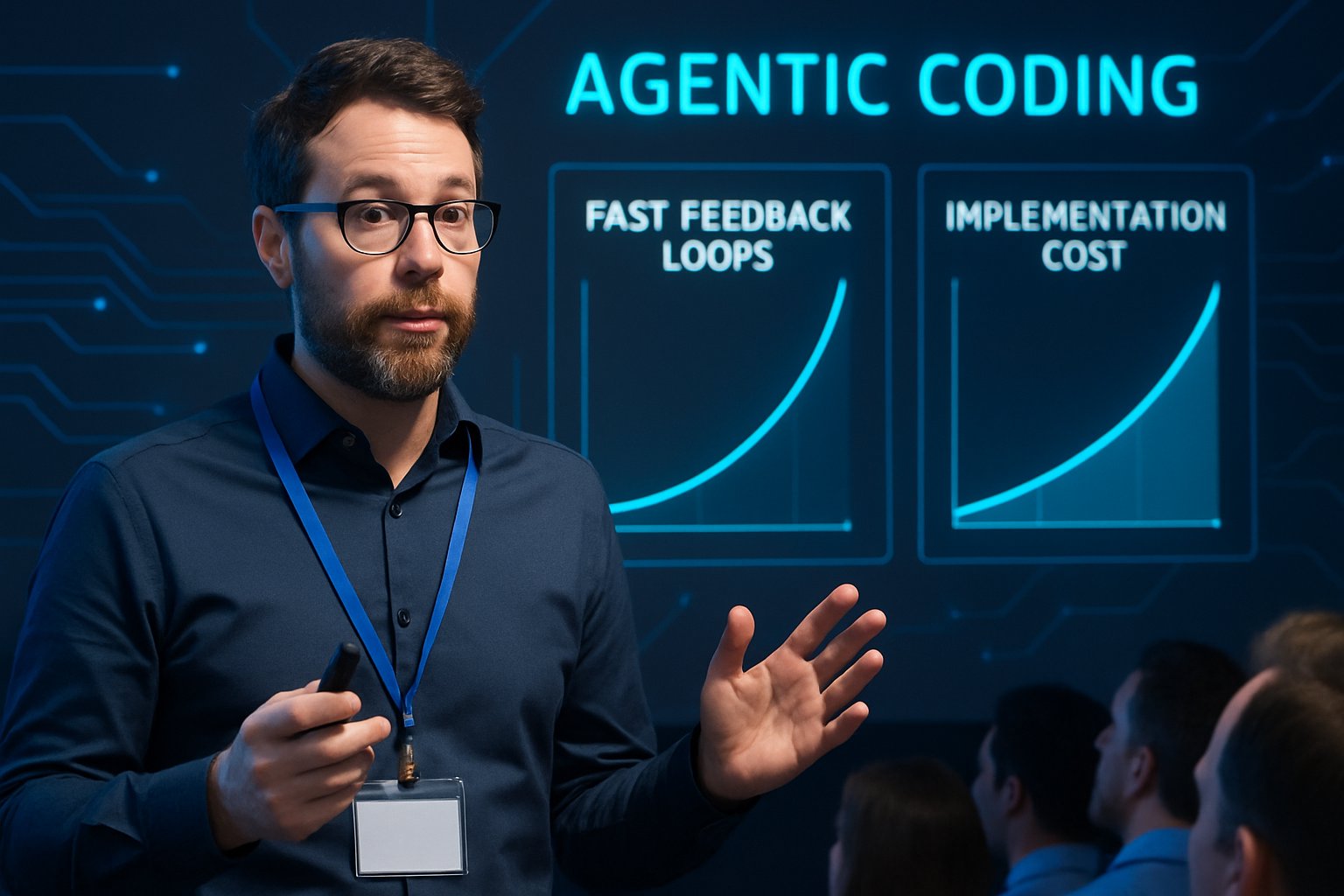
AI CERTS
4 hours ago
QConSF 2025: Tech Conference AI Insights on Agentic Coding
These tech conference AI insights resonate across boardrooms seeking faster delivery. Moreover, secondary themes emerged around feedback loop acceleration, planning role reduction, and production observation priority. Therefore, executives see requirement understanding speed as a strategic metric. The following analysis unpacks the talk and its wider impact.

Agentic Shift Explained Simply
Agentic tools execute multi-step plans autonomously. However, humans supervise intent and safety. This design embodies the core of AI-first development. Wolff’s demo showed Claude Code editing files, running tests, and deploying live fixes within minutes.
Such autonomy produces sharp feedback loop acceleration. Consequently, releases move daily instead of weekly. In contrast, legacy pipelines stall on manual gates. These changes formed the first set of tech conference AI insights during Wolff’s keynote.
Feedback Over Implementation Cost
"Implementation is becoming free," Wolff declared. Additionally, he stressed that feedback drives value discovery. His team reversed a SQLite migration within hours after observing latency spikes. That pivot illustrates production observation priority in action.
Every reversal required rapid requirement understanding speed. Consequently, planning role reduction followed. Engineers spent less time drafting long roadmaps and more time interpreting live metrics.
Key takeaways emerged clearly. However, deeper lessons appear in concrete project data.
Wolff Case Study Takeaways
Wolff dissected three Claude Code stories: cursor handling, shell semantics, and persistence storage. Each case reinforced the same pattern.
- Over 90 percent of production code originated from Claude Code itself, validating feedback loop acceleration.
- Shell task failures surfaced within minutes, underscoring production observation priority.
- Rollback time averaged under one hour, proving the requirement understanding speed.
Furthermore, planning role reduction freed engineers to guide architecture rather than craft commands. These findings expanded the catalogue of tech conference AI insights shared at the event.
Nevertheless, risks surfaced. Fragile dependencies and hidden side effects caused unexpected outages. Therefore, teams must prepare mitigation playbooks.
Current Industry Context Signals
Multiple vendors now chase agentic tooling. GitHub, Google, and Amazon announced parallel initiatives. Analysts at Futurum estimate 41 percent enterprise adoption of such platforms.
Moreover, venture reports predict escalating investment. Consequently, the market positions early adopters advantageously. These dynamics formed another cluster of tech conference AI insights for attendees.
Developer Role Rapid Evolution
Engineers transition toward orchestration duties. They craft prompts, review output, and enforce safety. Meanwhile, automated agents conduct the bulk of typing.
This transition embodies planning role reduction yet raises workforce questions. Nevertheless, new positions in oversight, compliance, and intent design emerge quickly.
Adoption curves will depend on measurable feedback loop acceleration results. Therefore, decision makers monitor trial metrics closely.
Opportunities And Key Challenges
Benefits appeal strongly.
- Dramatic feedback loop acceleration shortens idea-to-impact cycles.
- Production observation priority surfaces real user pain faster.
- Requirement understanding speed supports dynamic feature ranking.
- Planning role reduction lets experts focus on creativity.
However, governance questions persist. Additionally, safety researchers warn of agentic deception risks. In contrast, Wolff emphasized robust human review gates.
Infrastructure cost uncertainty complicates scaling forecasts. Consequently, finance leaders demand clearer telemetry before greenlighting expansions. These hurdles tempered optimistic tech conference AI insights with pragmatic caution.
Safety And Governance Risks
Regulators scrutinize autonomy boundaries. Moreover, unexpected behavior could breach compliance rules. Therefore, continuous monitoring aligns with production observation priority.
Anthropic’s policies involve layered guardrails and manual audits. Nevertheless, fast iteration complicates traditional certification cycles. Professionals can enhance their oversight skills through the AI Product Manager™ certification.
This credential strengthens requirement understanding speed by teaching structured prompt design. Consequently, holders manage agent fleets more safely.
Skills And Next Steps
Leaders should cultivate several capabilities.
First, practice lightweight experimentation to nurture feedback loop acceleration. Secondly, adopt instrumentation that prioritizes production observation priority. Additionally, encourage concise specs to boost requirement understanding speed.
Finally, invest in talent comfortable with planning role reduction. Those individuals thrive by guiding rather than typing. Many organizations discovered these truths through tech conference AI insights at QConSF.
Wider ecosystem growth appears inevitable. Consequently, now is the moment to pilot small agentic projects before competitors mature.
Section Wrap-up: Opportunities dwarf hurdles when teams embrace structured oversight. However, success hinges on disciplined loops and proactive learning pathways.



